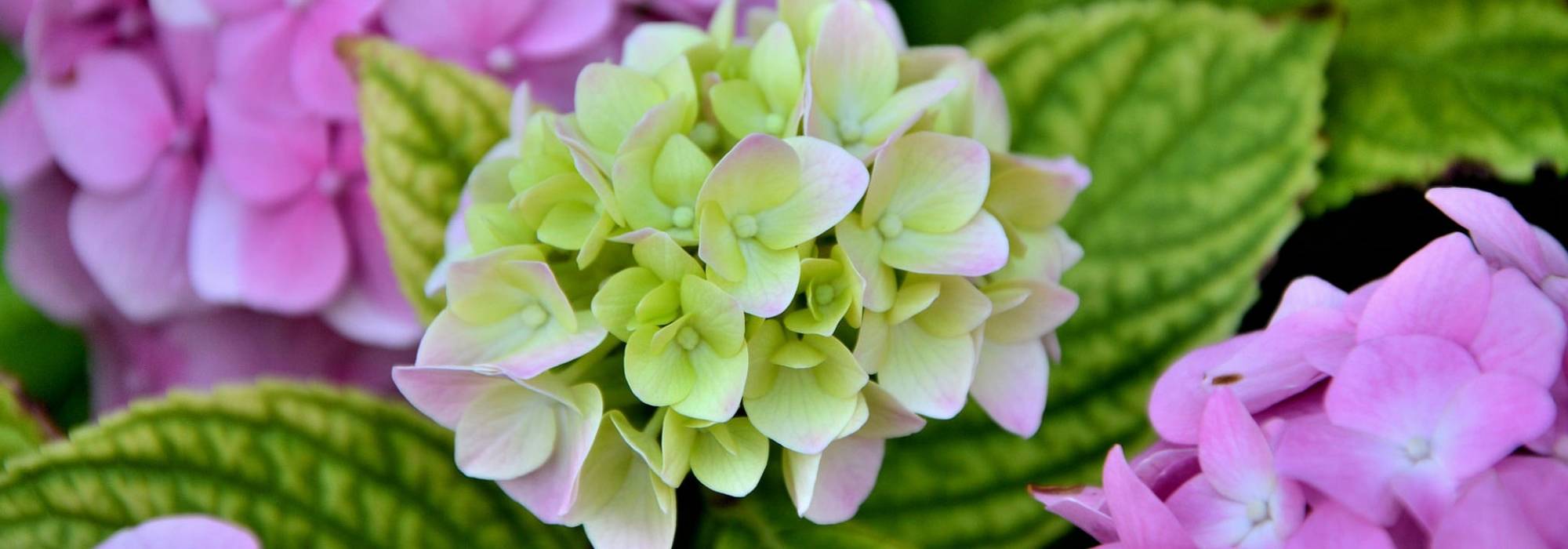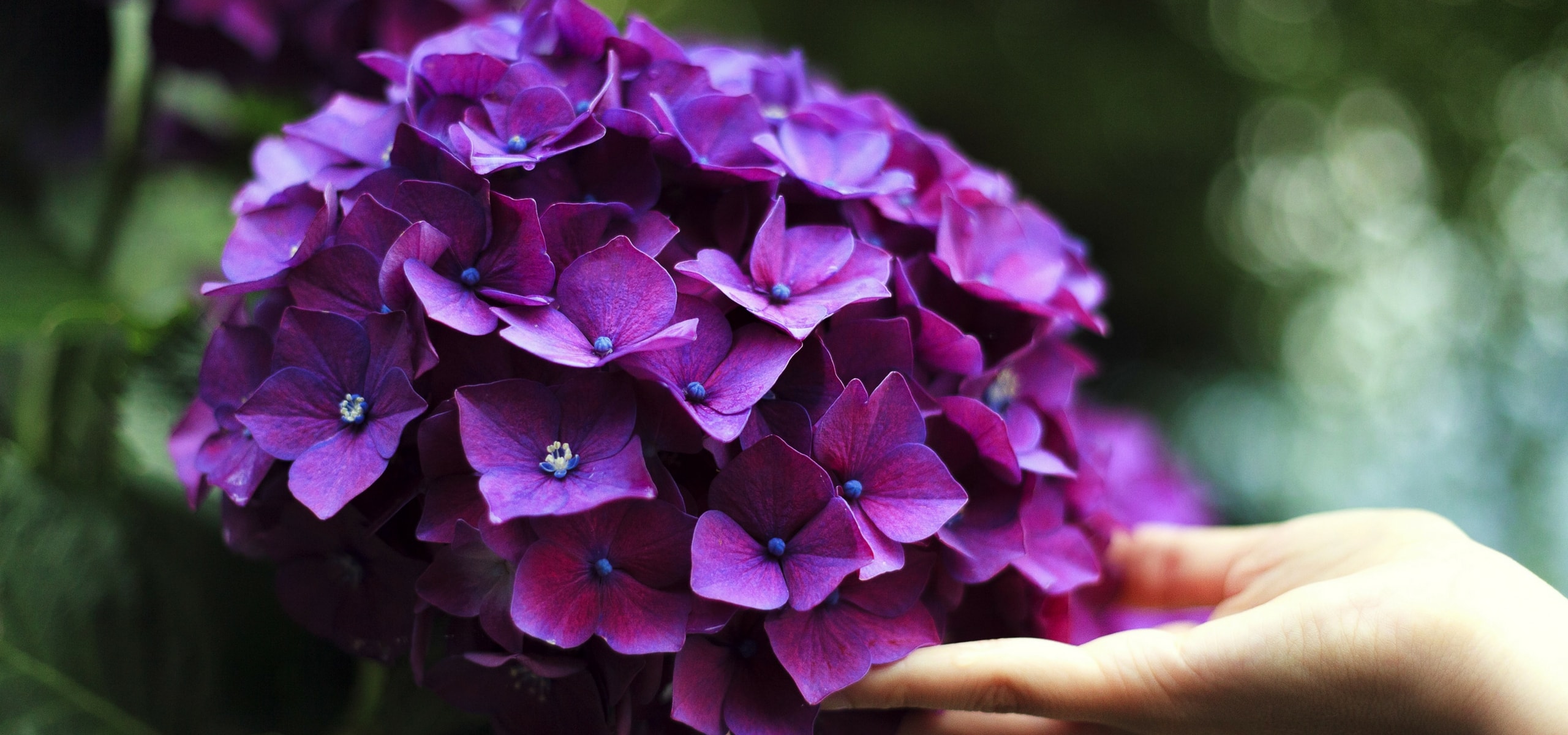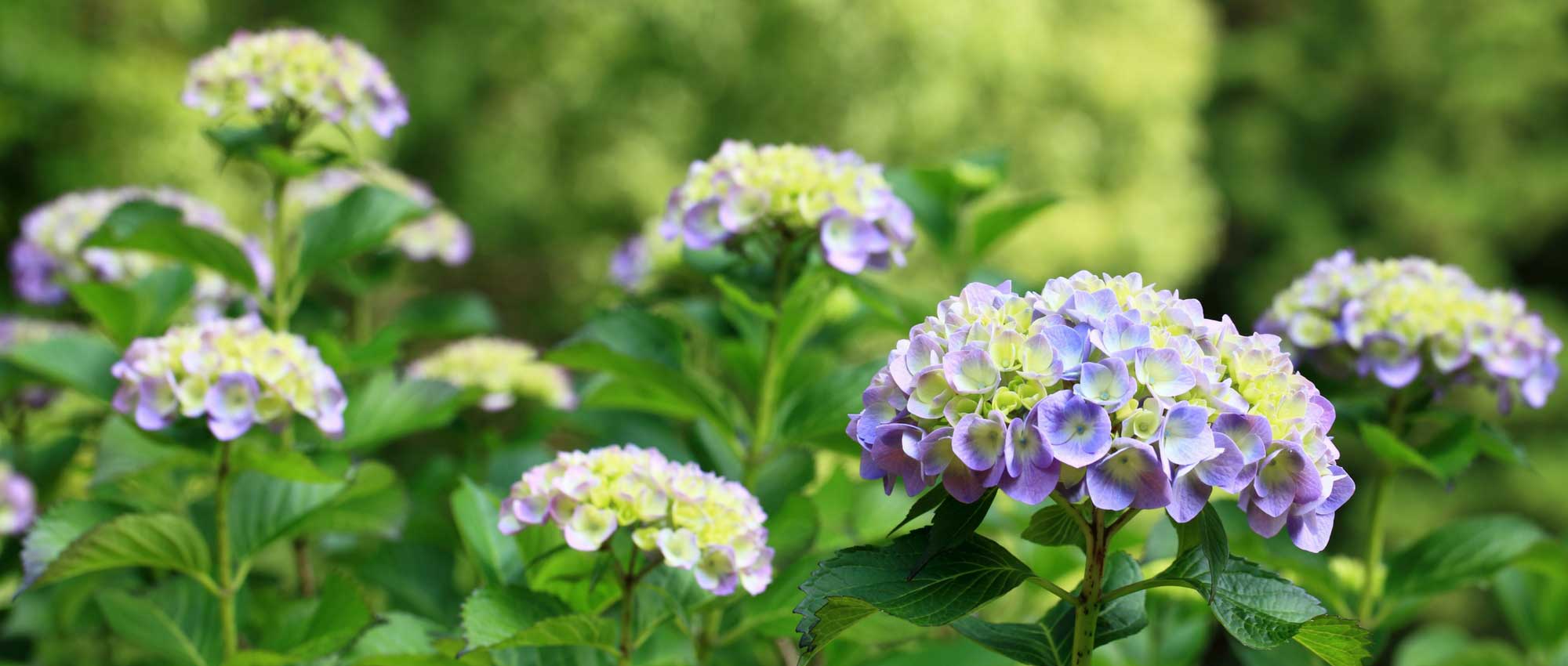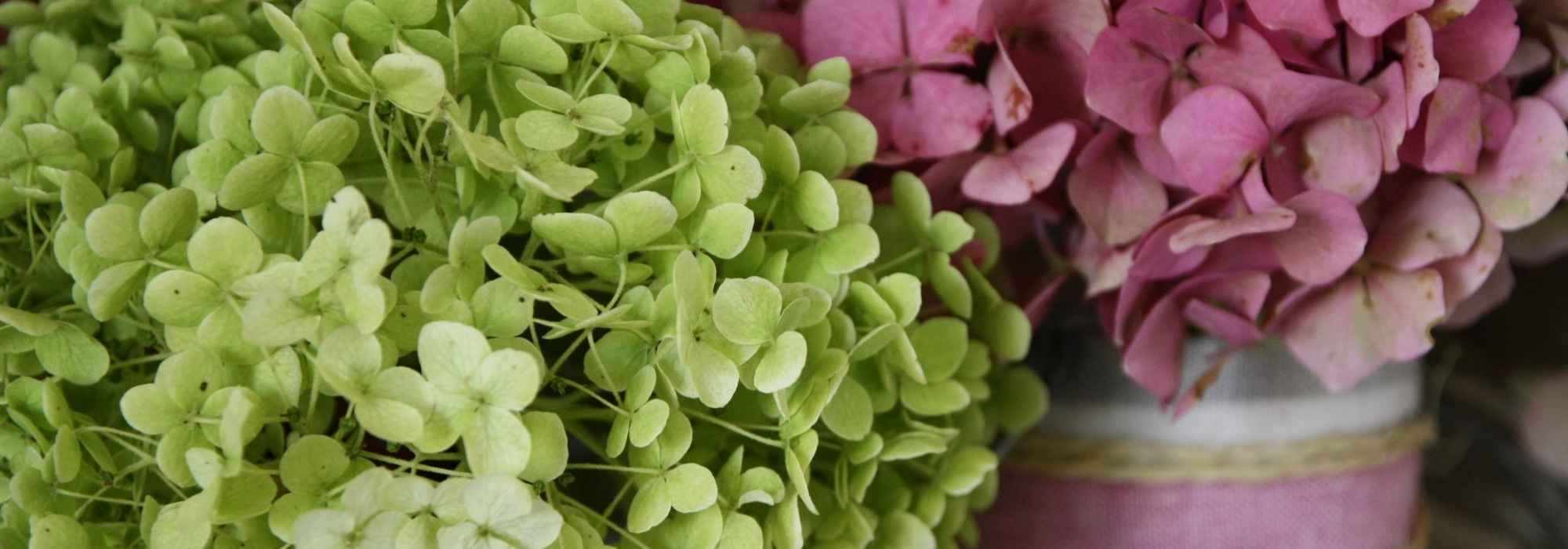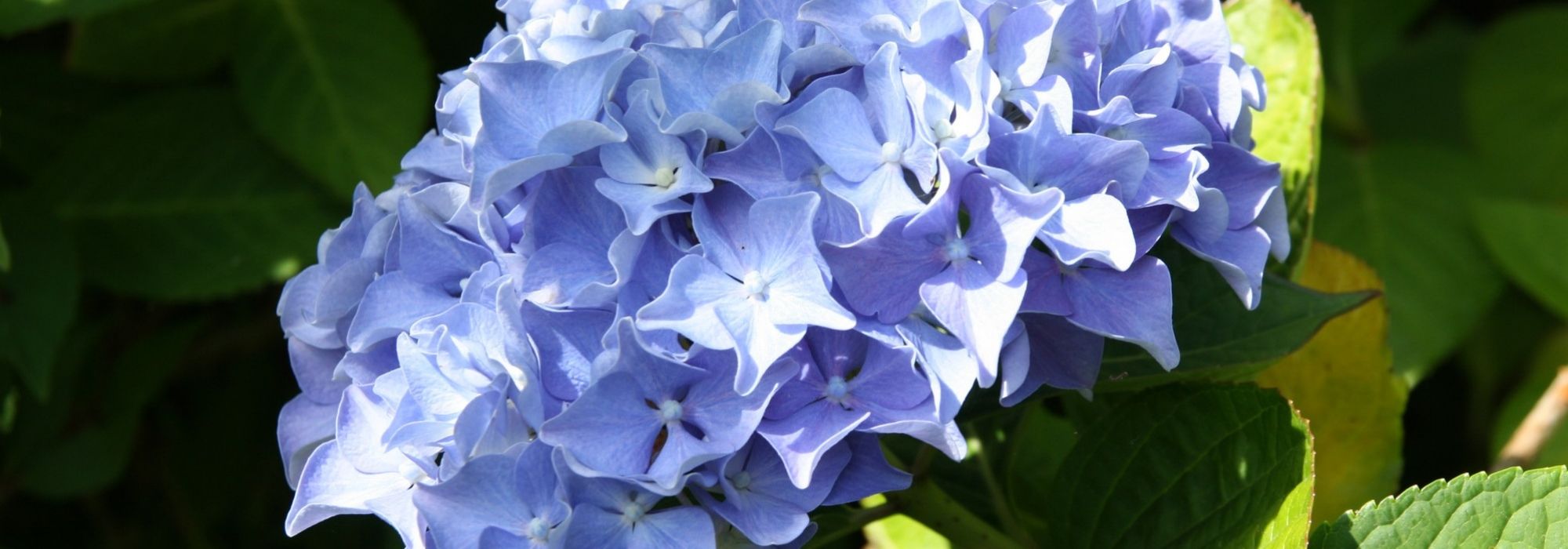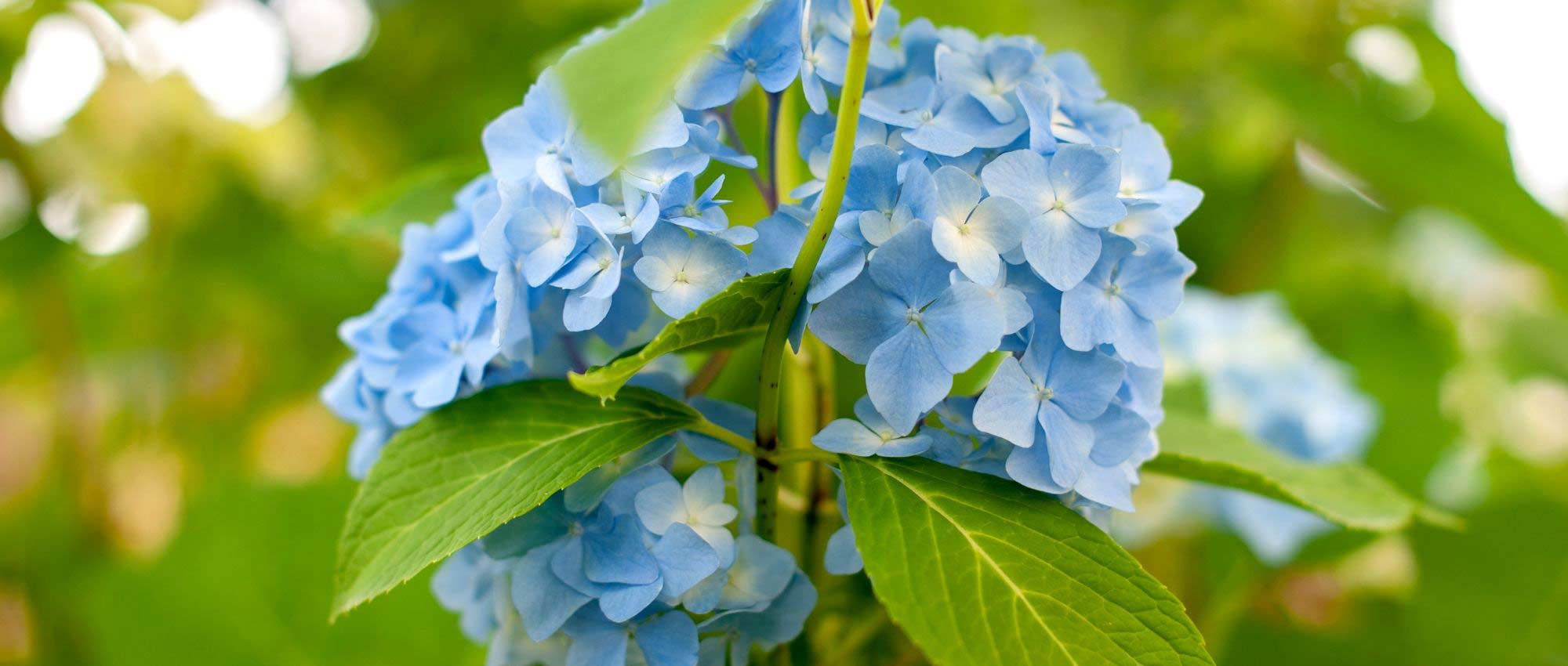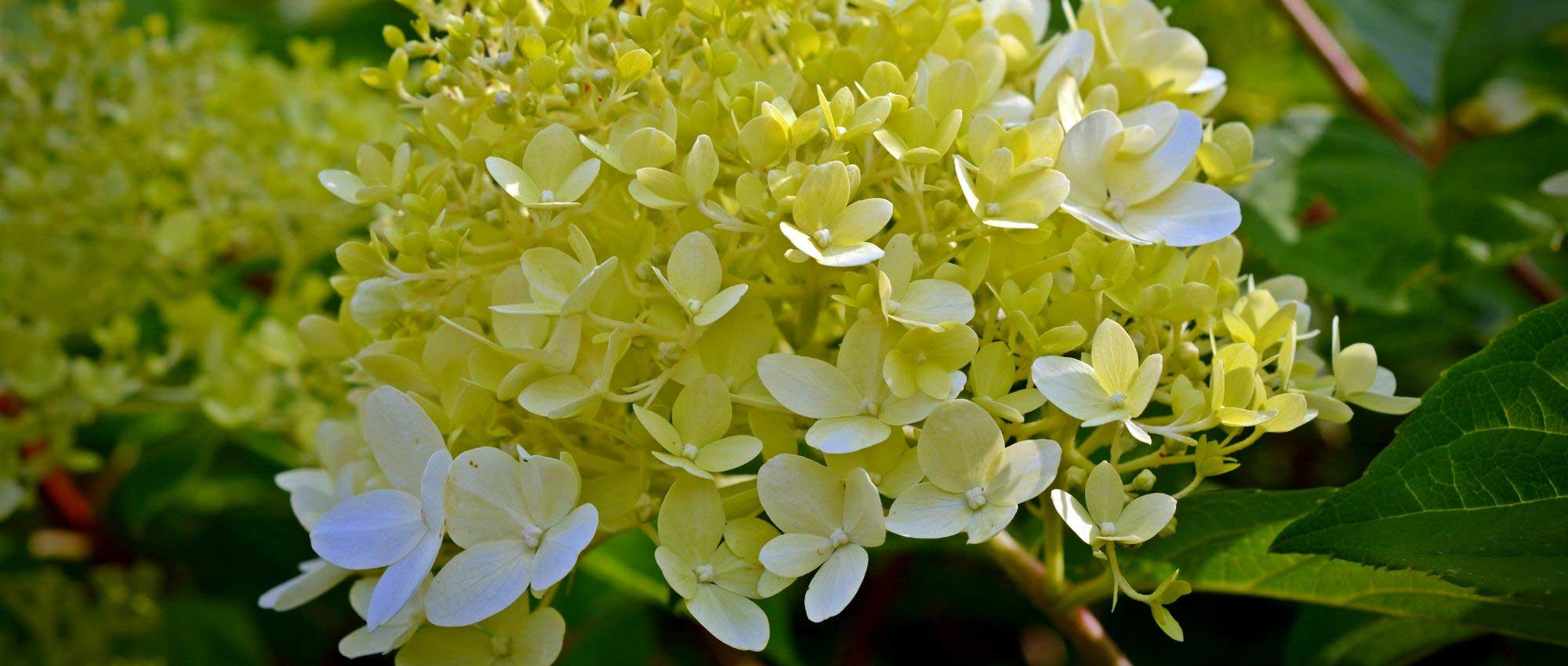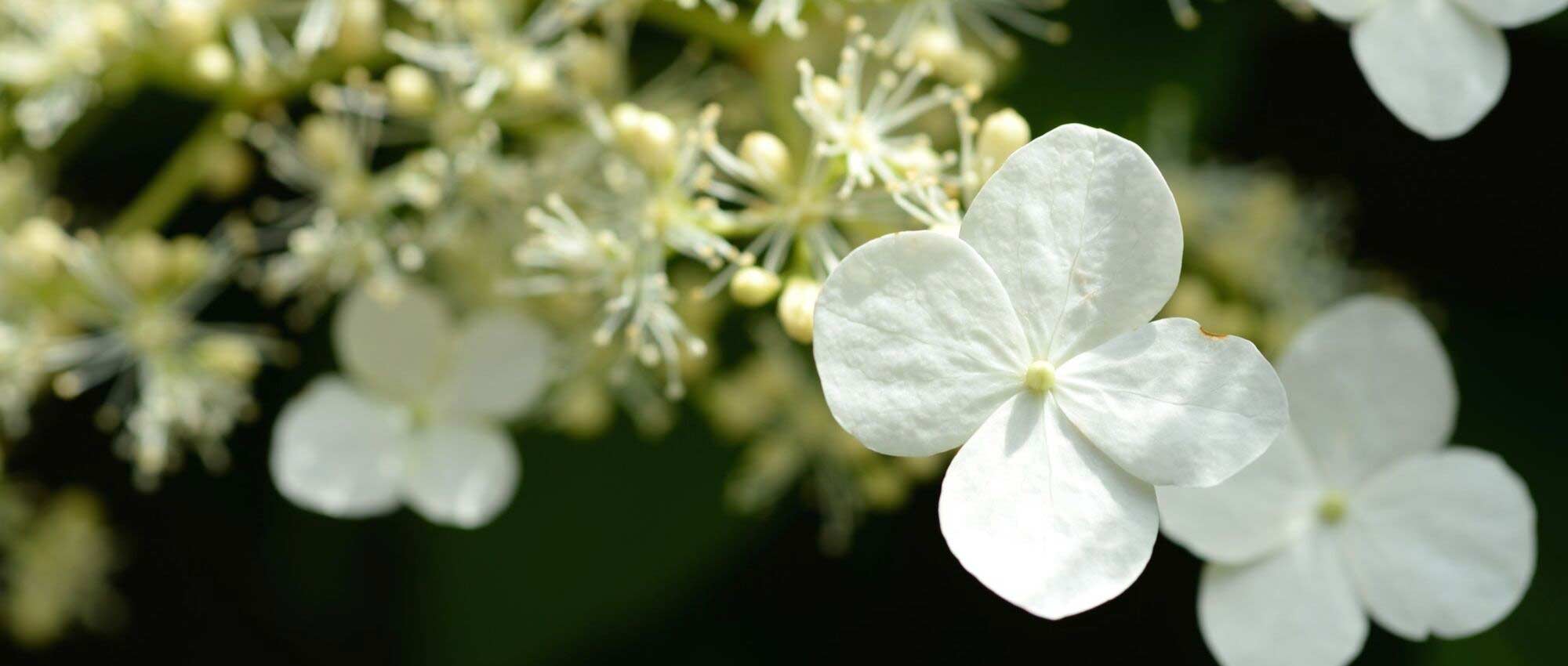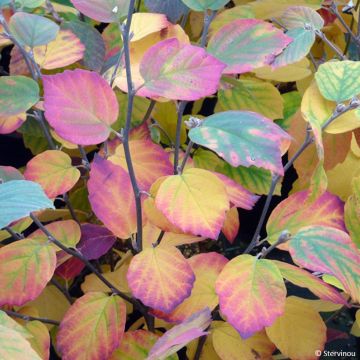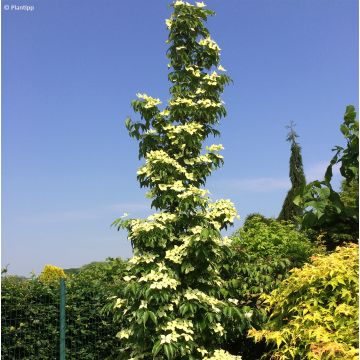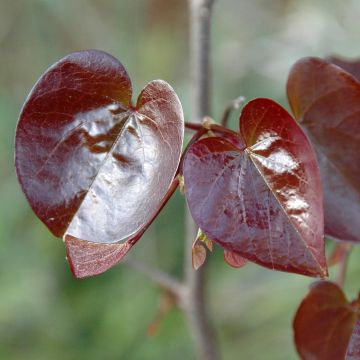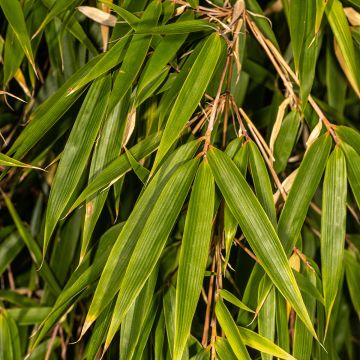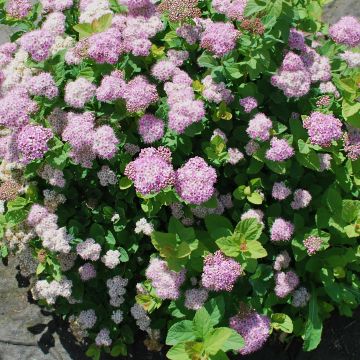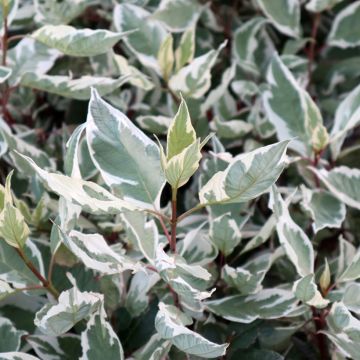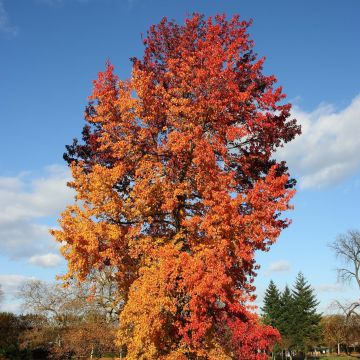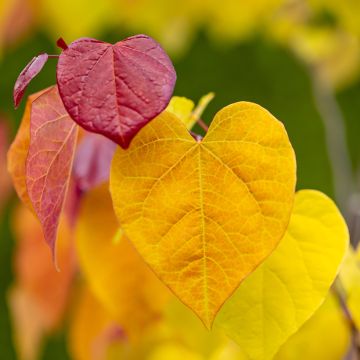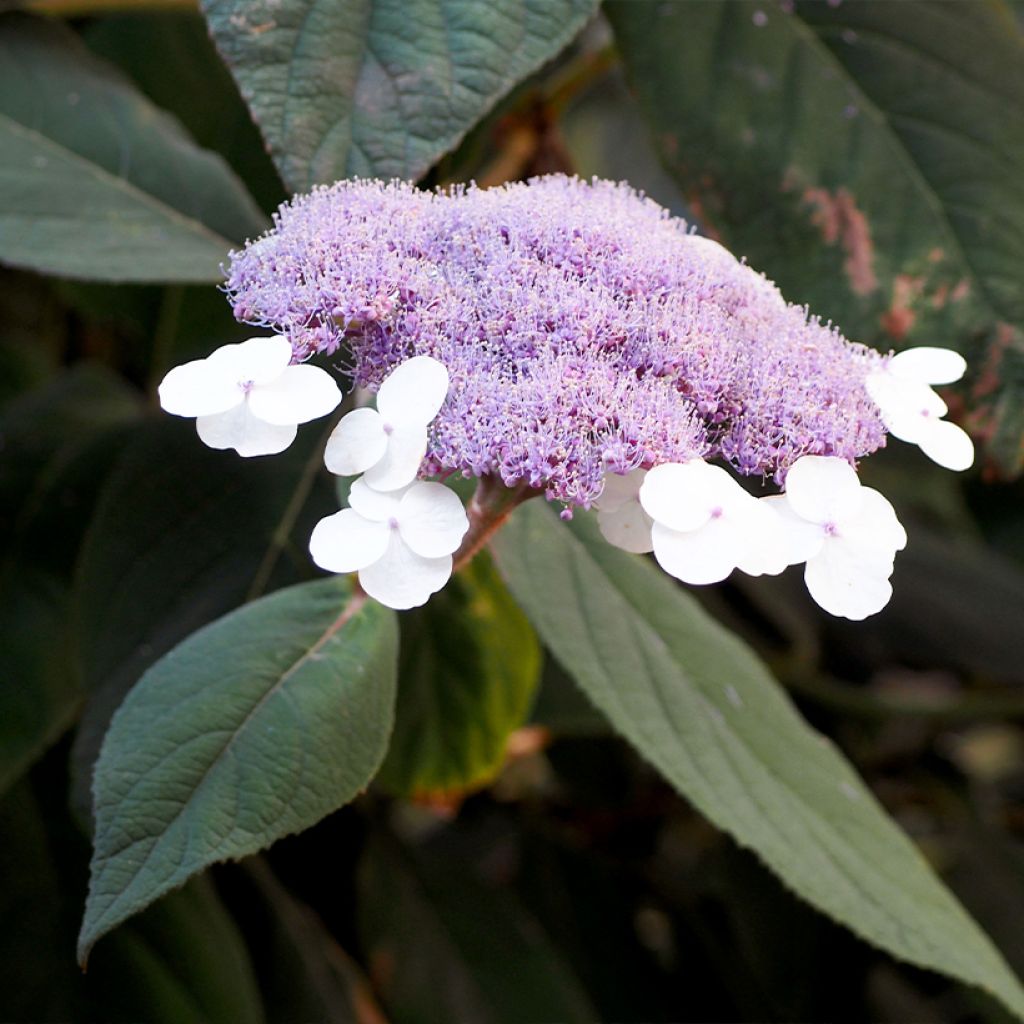

Hortensia - Hydrangea aspera villosa Velvet & Lace
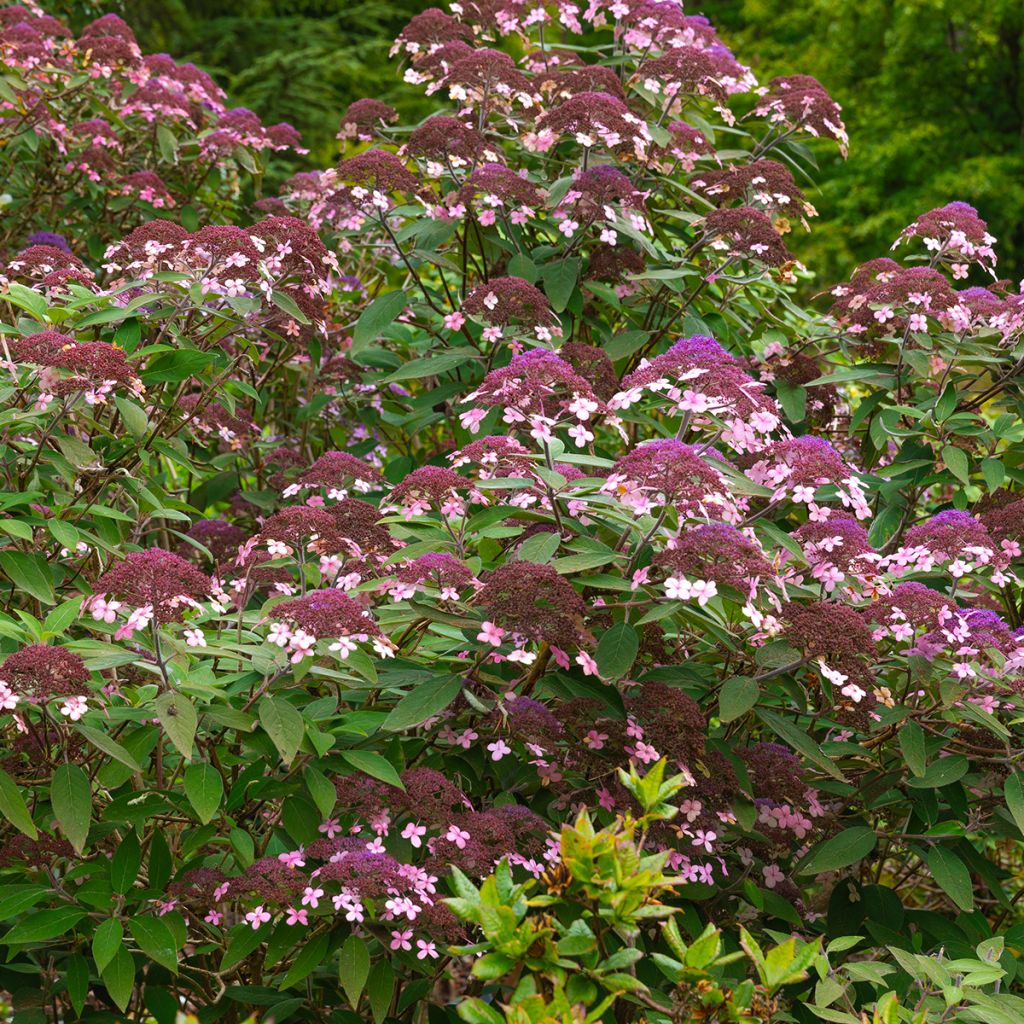

Hydrangea aspera Velvet & Lace
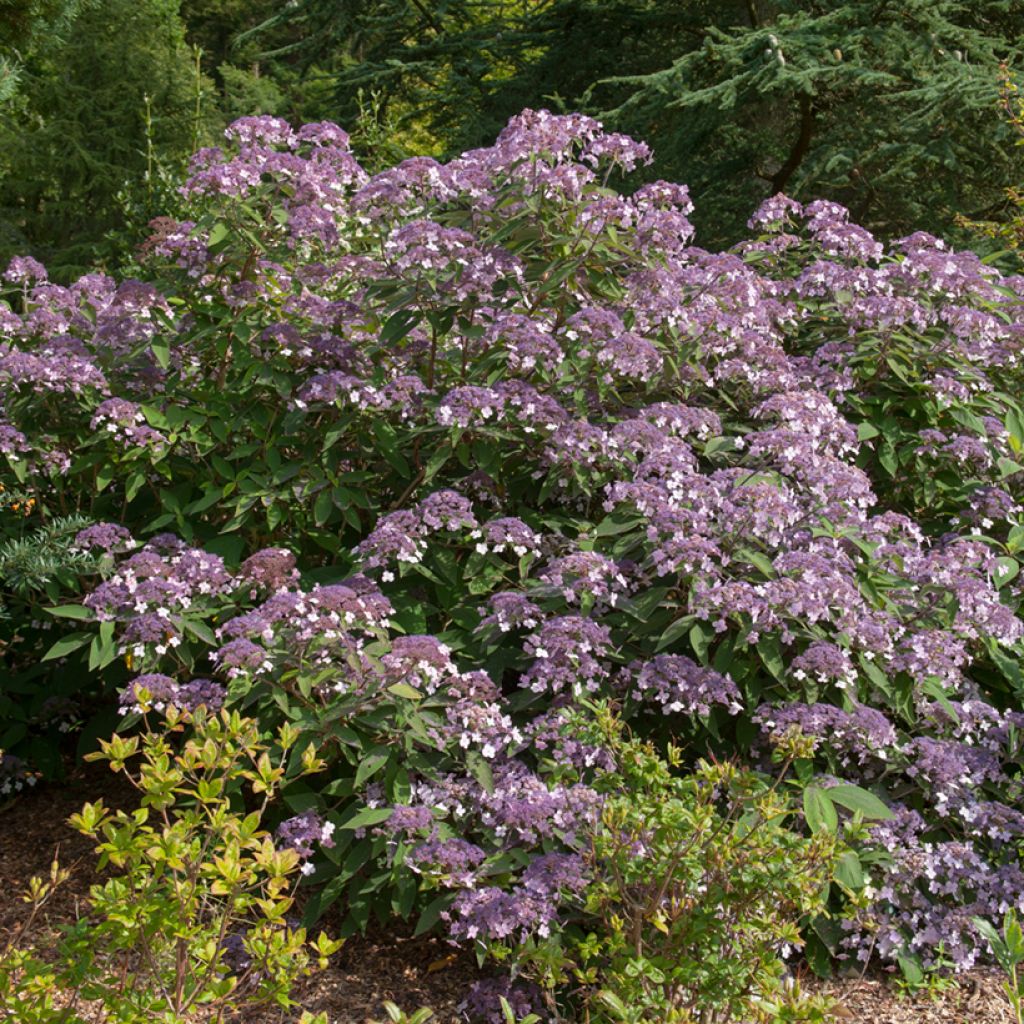

Hortensia - Hydrangea aspera villosa Velvet & Lace
Hydrangea aspera Velvet & Lace
Hydrangea aspera Velvet & Lace
Rough-leaved Hydrangea, Aspera Hydrangea
Special offer!
Receive a €20 voucher for any order over €90 (excluding delivery costs, credit notes, and plastic-free options)!
1- Add your favorite plants to your cart.
2- Once you have reached €90, confirm your order (you can even choose the delivery date!).
3- As soon as your order is shipped, you will receive an email containing your voucher code, valid for 3 months (90 days).
Your voucher is unique and can only be used once, for any order with a minimum value of €20, excluding delivery costs.
Can be combined with other current offers, non-divisible and non-refundable.
Home or relay delivery (depending on size and destination)
Schedule delivery date,
and select date in basket
This plant carries a 24 months recovery warranty
More information
We guarantee the quality of our plants for a full growing cycle, and will replace at our expense any plant that fails to recover under normal climatic and planting conditions.
Does this plant fit my garden?
Set up your Plantfit profile →
Description
The Hydrangea aspera villosa Velvet & Lace is a variety of Hydrangea that exudes a romantic charm. This medium-sized bush is covered in summer and until autumn with large clusters of violet, mauve, and lilac flowers, a harmonious blend of colours enhanced by the long slender green leaves. This bush does not necessarily require ericaceous soil to grow, a neutral, humus-rich, and moist soil suits it perfectly. Above all, it needs to be protected from drought, especially atmospheric dryness, by providing it with shade from trees and regularly watering it during hot periods. Hardy to about -18°C (-0.4 °F), it deserves to be more widely distributed in our gardens.
Originally from China, the Hydrangea villosa is a plant with confusing taxonomy, sometimes considered as a separate species, sometimes as a subspecies or variety of Hydrangea aspera, or Rough-leaved Hydrangea (due to its rough-textured leaves). It belongs to the Hydrangeaceae family, from which it gets its name, but which also includes other genera, some of which are of ornamental interest, such as the very popular Philadelphus and Deutzia, with their numerous decorative varieties. Or the less common Carpenteria and Kirengeshoma, as well as the Schizophragma or climbing False Hydrangea, so similar to the real one, Hydrangea petiolaris, favoured by garden enthusiasts. Its young branches and lanceolate leaves are hairy and soft to the touch. In summer, the bush bears numerous flat, umbel-shaped flower heads about 15 cm (5.9 in) in diameter, also called lacecaps. The flower heads have a central cluster of intense mauve fertile flowers and peripheral thin sterile flowers, called pseudoflowers, in pale mauve pink.
Velvet & Lace is a horticultural improvement of the species. This medium-sized bush, reaching about 2.50 m (8 ft 2 in) in all directions after 10 years of planting, has a slightly wild appearance, quite different from the round-headed Hydrangeas with smooth and glossy leaves. It has large elongated leaves up to 25 cm (9.8 in) long, with a matte green colour due to the fuzz that covers them. Of medium growth, it grows somewhat irregularly, making it easy to integrate into a natural garden. This bush is particularly appreciated for its long flowering period, which extends from July to September, or even October. It is covered with flat flower heads composed of fertile flowers in the centre, ranging in colour from lilac to violet, with blue stamens standing out. On the periphery, mauve sterile florets develop, and the resulting clusters resemble certain Viburnum flowers (such as V. sargentii 'Onondaga', for example) more than the large heads of the classic Hydrangea macrophylla.
This deciduous bush does not have the same soil requirements, it can grow in neutral soil and does not necessarily need acidic soil like ericaceous soil as many other species do. However, it does need some shade, as it is sensitive to soil and air dryness. Shading from trees is preferable to that provided by a wall, and its architecture will blend well with a planting on the edge of trees, creating vegetation layers reminiscent of those found in nature. Quite hardy, at least down to -18°C (-0.4 °F), it is a low-maintenance plant, except for regular watering in summer and some pruning in late winter to remove faded flowers and dry stems at the centre.
The Hydrangea aspera villosa Velvet & Lace will appeal to enthusiasts of aesthetically pleasing plants with a not-too-sophisticated appearance, with a natural habit that is easy to incorporate into a rural environment. Plant it on the edge of an woodland, at the back of a bed, or under tall trees, in a cool atmosphere mixed with other plants with similar needs. It will be perfect on the edge of trees like the Liquidambars, whose warm autumn colours will extend its flowering season. The fabulous Nyssa sylvatica will also be a good companion in the background, while you can plant perennials at the base of your Velvet & Lace. A charming Thalictrum, with delicate and airy flowers, or a delicate Bleeding Heart with white or pink flowers, or even the highly graphic Solomon's Seal (Polygonatum multiflorum) with its arched stems bearing clusters of white bells, will all be plants that will give your natural bed its character.
Hydrangea aspera Velvet & Lace in pictures
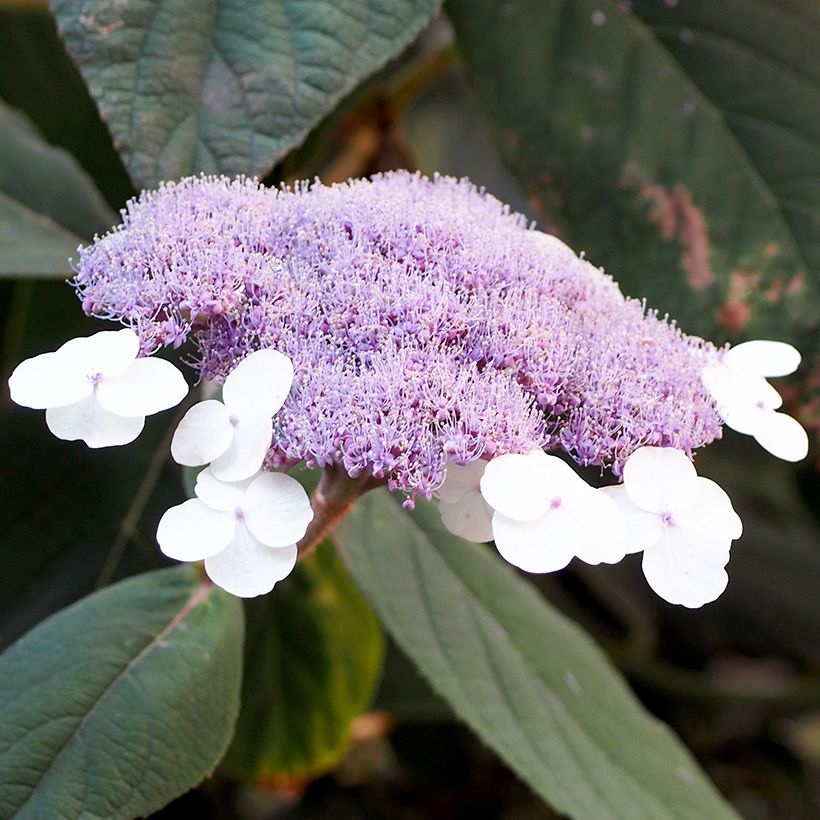

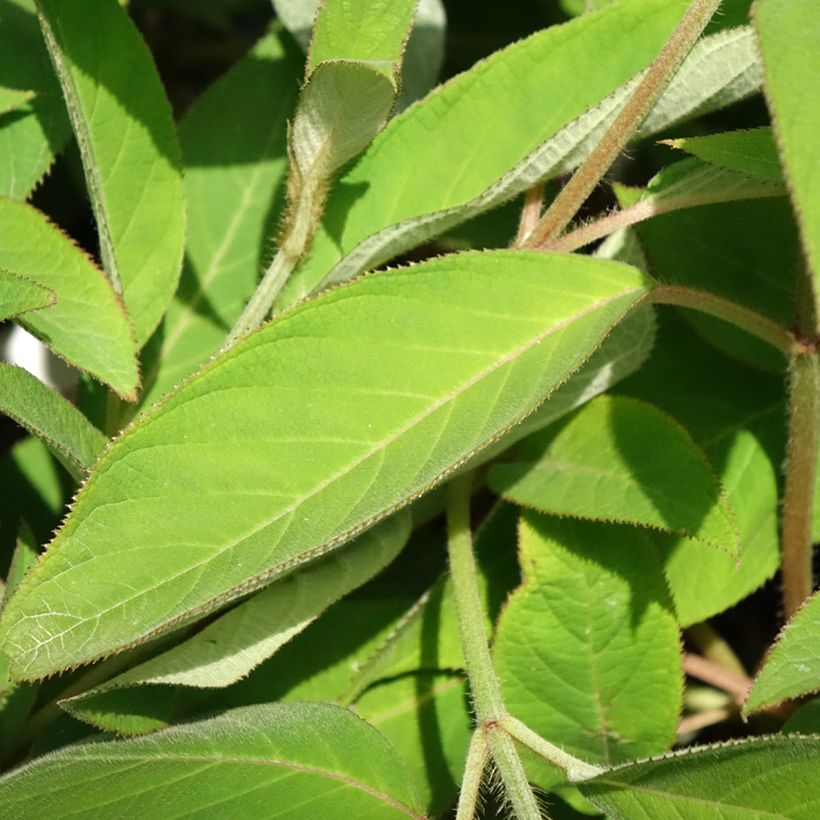

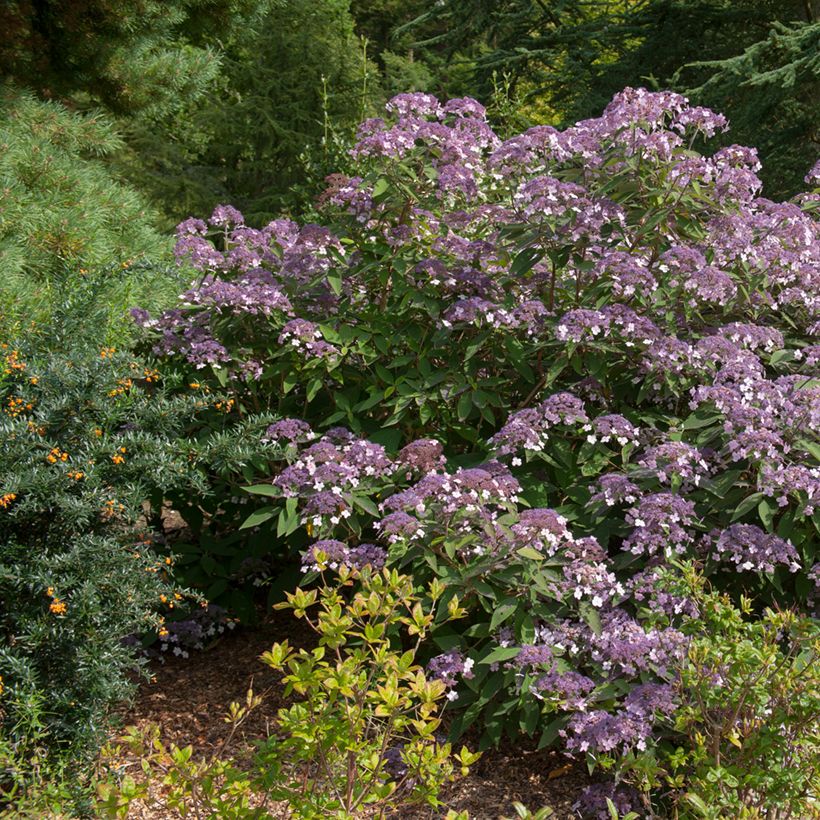

Plant habit
Flowering
Foliage
Botanical data
Hydrangea
aspera
Velvet & Lace
Hydrangeaceae
Rough-leaved Hydrangea, Aspera Hydrangea
Cultivar or hybrid
Planting and care
The 'Velvet and Lace' Hydrangea is a delicate plant that requires moist soil and air. It can grow in an exposed position in less sunny climates, but with heatwaves becoming more common, it's best to plant it in partial or complete shade. Ideally, it should be planted in the light shade of trees to maintain a slightly humid woodland atmosphere. This plant can adapt to neutral or slightly alkaline soil, but it's unsuitable for soils with a lot of active limestone. A soil rich in humus that is slightly moist but well-drained is ideal.
To plant the 'Velvet and Lace' Hydrangea, dig a hole that is 60 cm (23.6 in) in all directions and enrich the soil with good planting compost mixed with the existing soil. You can add a little organic soil improver to the bottom of the hole before covering it with this mixture so it's not in direct contact with the roots. Soak the root ball in a bucket of water for around 15 minutes, place it in the planting hole, fill in around it, and then water thoroughly. Water regularly for the first two years and during hot periods.
Planting period
Intended location
Care
Planting & care advice
-
, onOrder confirmed
Reply from on Promesse de fleurs
Similar products
Haven't found what you were looking for?
Hardiness is the lowest winter temperature a plant can endure without suffering serious damage or even dying. However, hardiness is affected by location (a sheltered area, such as a patio), protection (winter cover) and soil type (hardiness is improved by well-drained soil).

Photo Sharing Terms & Conditions
In order to encourage gardeners to interact and share their experiences, Promesse de fleurs offers various media enabling content to be uploaded onto its Site - in particular via the ‘Photo sharing’ module.
The User agrees to refrain from:
- Posting any content that is illegal, prejudicial, insulting, racist, inciteful to hatred, revisionist, contrary to public decency, that infringes on privacy or on the privacy rights of third parties, in particular the publicity rights of persons and goods, intellectual property rights, or the right to privacy.
- Submitting content on behalf of a third party;
- Impersonate the identity of a third party and/or publish any personal information about a third party;
In general, the User undertakes to refrain from any unethical behaviour.
All Content (in particular text, comments, files, images, photos, videos, creative works, etc.), which may be subject to property or intellectual property rights, image or other private rights, shall remain the property of the User, subject to the limited rights granted by the terms of the licence granted by Promesse de fleurs as stated below. Users are at liberty to publish or not to publish such Content on the Site, notably via the ‘Photo Sharing’ facility, and accept that this Content shall be made public and freely accessible, notably on the Internet.
Users further acknowledge, undertake to have ,and guarantee that they hold all necessary rights and permissions to publish such material on the Site, in particular with regard to the legislation in force pertaining to any privacy, property, intellectual property, image, or contractual rights, or rights of any other nature. By publishing such Content on the Site, Users acknowledge accepting full liability as publishers of the Content within the meaning of the law, and grant Promesse de fleurs, free of charge, an inclusive, worldwide licence for the said Content for the entire duration of its publication, including all reproduction, representation, up/downloading, displaying, performing, transmission, and storage rights.
Users also grant permission for their name to be linked to the Content and accept that this link may not always be made available.
By engaging in posting material, Users consent to their Content becoming automatically accessible on the Internet, in particular on other sites and/or blogs and/or web pages of the Promesse de fleurs site, including in particular social pages and the Promesse de fleurs catalogue.
Users may secure the removal of entrusted content free of charge by issuing a simple request via our contact form.
The flowering period indicated on our website applies to countries and regions located in USDA zone 8 (France, the United Kingdom, Ireland, the Netherlands, etc.)
It will vary according to where you live:
- In zones 9 to 10 (Italy, Spain, Greece, etc.), flowering will occur about 2 to 4 weeks earlier.
- In zones 6 to 7 (Germany, Poland, Slovenia, and lower mountainous regions), flowering will be delayed by 2 to 3 weeks.
- In zone 5 (Central Europe, Scandinavia), blooming will be delayed by 3 to 5 weeks.
In temperate climates, pruning of spring-flowering shrubs (forsythia, spireas, etc.) should be done just after flowering.
Pruning of summer-flowering shrubs (Indian Lilac, Perovskia, etc.) can be done in winter or spring.
In cold regions as well as with frost-sensitive plants, avoid pruning too early when severe frosts may still occur.
The planting period indicated on our website applies to countries and regions located in USDA zone 8 (France, United Kingdom, Ireland, Netherlands).
It will vary according to where you live:
- In Mediterranean zones (Marseille, Madrid, Milan, etc.), autumn and winter are the best planting periods.
- In continental zones (Strasbourg, Munich, Vienna, etc.), delay planting by 2 to 3 weeks in spring and bring it forward by 2 to 4 weeks in autumn.
- In mountainous regions (the Alps, Pyrenees, Carpathians, etc.), it is best to plant in late spring (May-June) or late summer (August-September).
The harvesting period indicated on our website applies to countries and regions in USDA zone 8 (France, England, Ireland, the Netherlands).
In colder areas (Scandinavia, Poland, Austria...) fruit and vegetable harvests are likely to be delayed by 3-4 weeks.
In warmer areas (Italy, Spain, Greece, etc.), harvesting will probably take place earlier, depending on weather conditions.
The sowing periods indicated on our website apply to countries and regions within USDA Zone 8 (France, UK, Ireland, Netherlands).
In colder areas (Scandinavia, Poland, Austria...), delay any outdoor sowing by 3-4 weeks, or sow under glass.
In warmer climes (Italy, Spain, Greece, etc.), bring outdoor sowing forward by a few weeks.






























